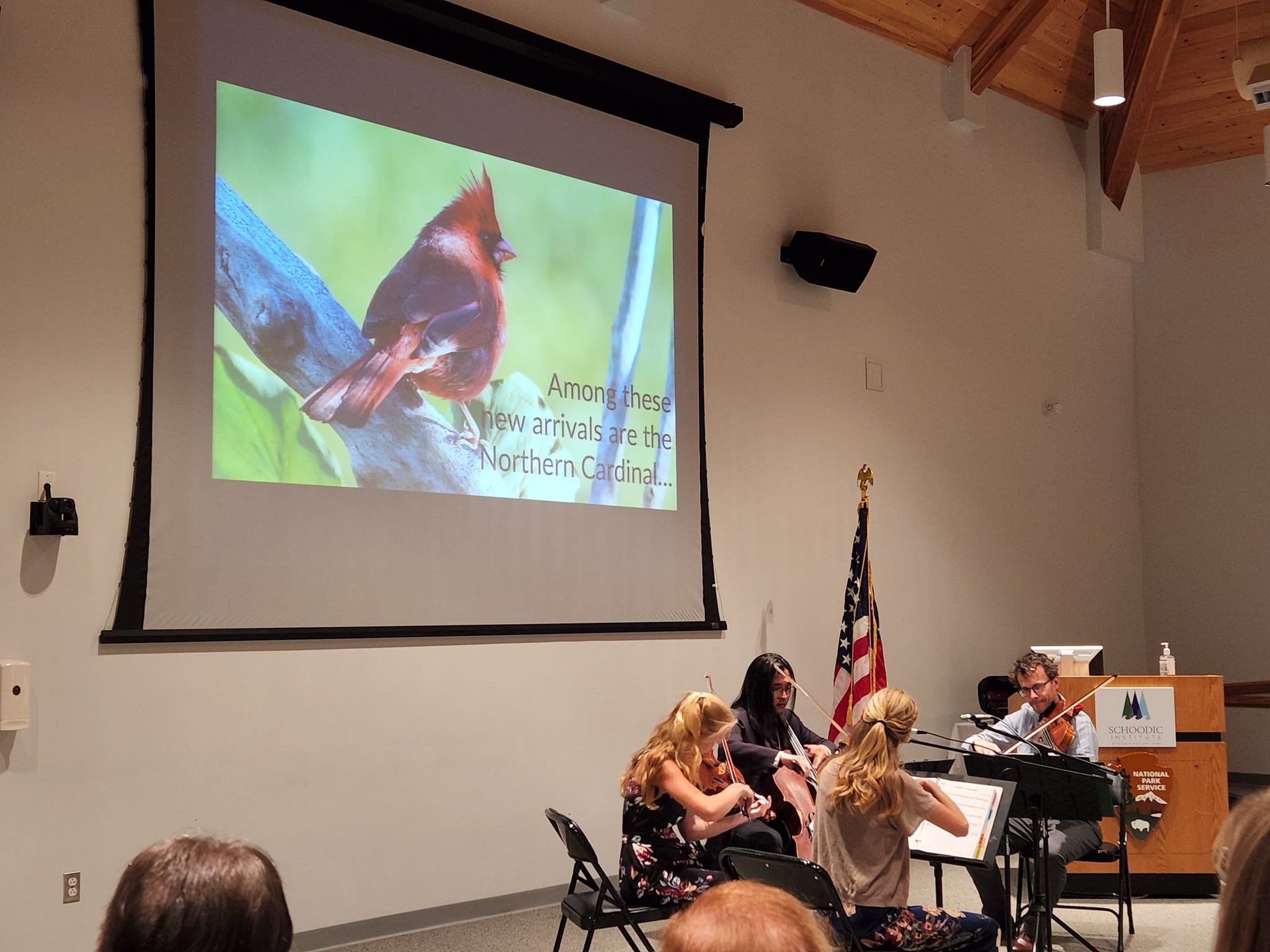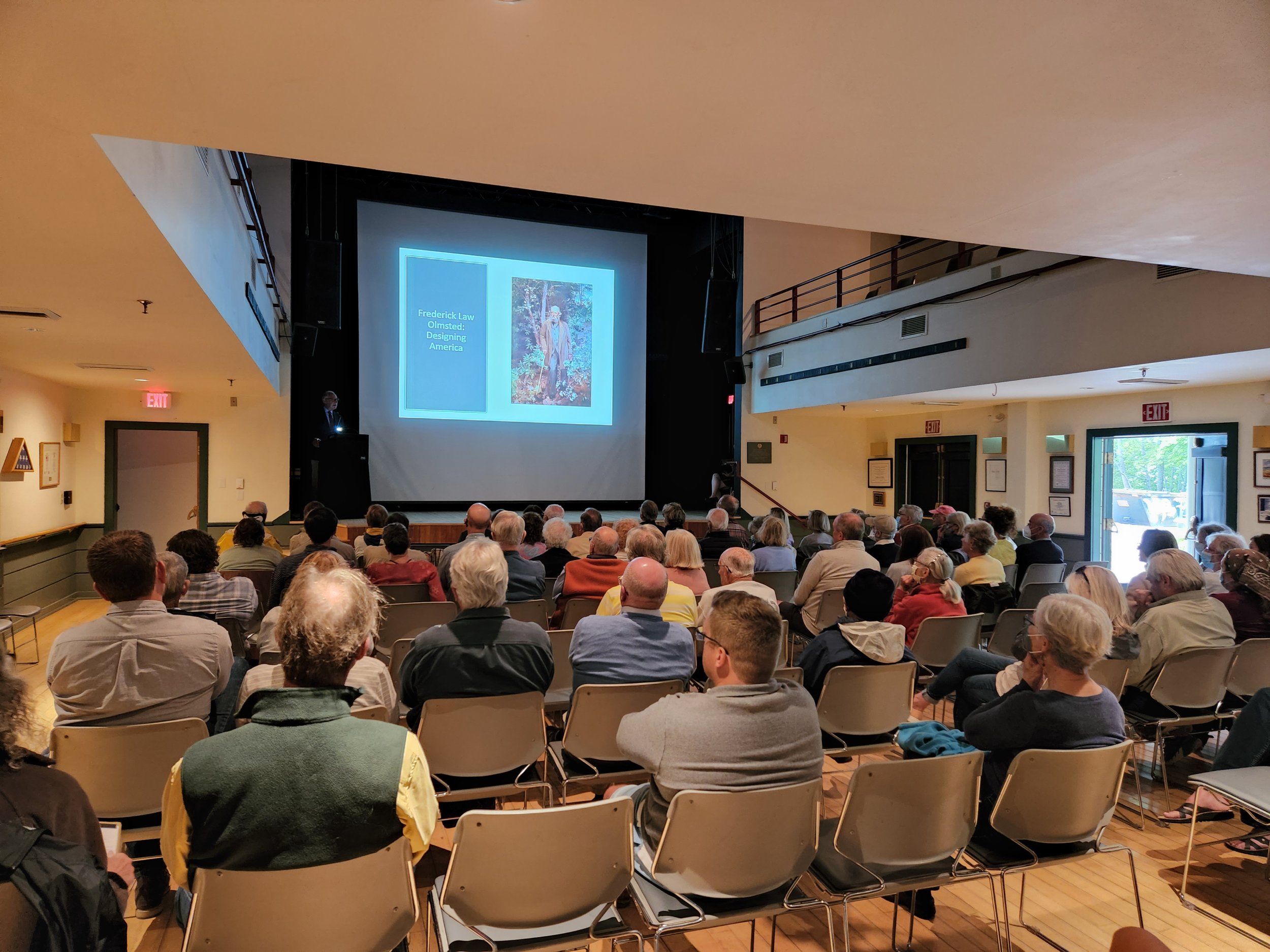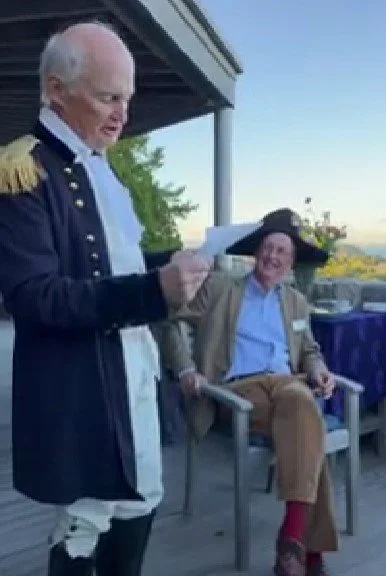Fall 2022
From the Executive Director, Raney Bench
Fall always heralds big changes on MDI as summer residents leave, tourism starts to dwindle, and our island is transformed from a summer playground to a place of quiet reflection. I love the energy of summer, but also welcome the opportunity to focus on bigger projects that the quiet of fall allows. Articles for the 2023 edition of Chebacco are coming in for editing, grants are due, and planning for 2023 is already underway.
Changes are coming to the MDI staff as well. Leah Lucey is moving to part-time Finance Manager, which opened up a leadership position on our team. We are thrilled to welcome Lisa Murray as our new Assistant Director, starting in November! In addition to managing our membership and two historic campuses, Lisa will work with students, helping them use primary source documents to learn more about island history, and support our growing public program series. Jenna Jandreau will continue to oversee our online programming, and Lisa will lead in-person programs, lectures, and events. The timing for this couldn’t be better because this past summer the Society offered more in-person programming than ever before, reaching over 1,500 people through off-site lectures, art events, tours, and classes.
Patrick Callaway, our collections manager, highlights a new donation of archival materials we recently received in his article “From the Collections,” but I want to take a moment to share how honored we are to be the caretakers of this important collection from Moorhead (Mike) Kennedy and his family. The volume of material is going to take years to process, but it’s hard to overemphasize the importance of this collection to local history, MDI culture, and world events. We will be sharing more throughout the cataloging process, so stay tuned for updates, articles, and programs related to the collection. In addition to the incredible educational value of the collection, it also represents an investment by the Society to process, digitize, and care for it in perpetuity. If you are interested in supporting this work, please make a donation today: www.mdihistory.org/membership. Thank you for your support.
Scenes from this Summer
Left to right: String quartet Halcyon performs music inspired by the Landscape of Change project at Schoodic Institute in August; public historian and filmmaker Laurence Cotton speaks to a full house at COA’s Gates Auditorium about Frederick Law Olmsted and the Olmsted firm; at the annual staff and board potluck, former president William (Bill) Horner, MD, passed the “ceremonial bi-corn” hat to his successor, current president Ben Pierce.
History Matters: Local King Tide project
This fall, the Society - along with new Landscape of Change partner, the newly-reopened Mount Desert Oceanarium; Schoodic Institute; and artist Jenn Steen Booher - are teaming up with Mount Desert Island High School students and their teacher Ruth Poland to locate, record, and analyze environmental data for real-world application.
First, using primary source images and records from the Mount Desert Island Historical Society, high school students will review historical sources documenting sea level, specifically looking for height of tide during extreme events and storms, to create a dataset documenting these observations. Raney will highlight the Champlain Society’s role in current climate research, and how they as community scientists will be conducting similar research.
Catherine Schmitt, Science Communications Specialist at Schoodic Institute, will visit the high school to talk about king tides (high tide that occurs during a new or full moon), predict with students some local areas that may be vulnerable to extreme tide events, and teach them how to record observations in the field.
During a king tide event on October 27, students will take a field trip to the Oceanarium and document this extreme tide event in real-time, capturing modern measurements and images.
Catherine will return to the high school to help students analyze their data and map a tidal incursion, comparing their findings to their earlier predictions.
MDI Historical Society’s Artist in Residence Jennifer Steen Booher will round out the program by sharing with the students her own artistic process as she grapples with the emotional impact of climate change and sea level rise. In her We Change With Them essay and exhibit, Booher used data to understand trends, and created original artwork based on her research.
Landscape of Change on the National Stage
The Landscape of Change project will be appearing in two upcoming works by Sarah Sutton, CEO of Environment and Culture Partners. Sarah, along with Stephanie Shapiro, co-founded the non-profit organization, Environment & Culture Partners, to “strengthen and broaden the environmental leadership of the cultural sector” (ECP website). In a letter of support for the project, Sutton wrote, “Landscape of Change, in its entirety of historical and scientific research, crowd-sourced engagement, exhibits and lectures, is the project to advance the practice of the history field on research and public engagement on climate change.”
This past September, board member Julia Gray accepted the AASLH Leadership in History Award for MDI Historical Society and the Landscape of Change project at the annual AASLH conference in Buffalo, NY. The American Association for State and Local History, “the only comprehensive national organization dedicated to state and local history,…strives to position history as a critical component of American life.” (AASLH website).
We are thrilled to receive a $5,000 grant from Villanova University for our upcoming sea level rise project this fall with Schoodic Institute, the high school, and artist Jenn Booher. The Lepage Center’s “Climate Change in Historical Perspective” grant program only awarded support to five organizations in the country. From the award letter: "The committee was impressed with the scope, specificity, and detail of your proposal and its potential for serving the public interest regarding climate change, as well as environmental and scientific history."
The ticker tape parade held in New York after hostages return home from Iran.
From the Collections - by Patrick Callaway, Collections Coordinator
The collections department here at the Historical Society has been exceptionally busy of late. We have been blessed by a number of donations over the past few weeks that will greatly enrich our collections.
One of the most interesting and significant donations is from Moorhead Kennedy. Kennedy was a diplomat who was held captive in Iran in 1979-1981 after the fall of the US Embassy in Tehran. His generous donation includes his story from that time as well as his subsequent career as a public speaker, peace advocate, and lecturer. We also received numerous records following the story of Moorhead’s wife Louisa Kennedy and her efforts to establish FLAG: the Family Liaison Action Group, which advocated on the behalf of the captives and their families. All together, we received thousands of pages of documents, numerous photographs, dozens of video and audio tapes, and other materials. Our cataloging is at a very early stage and we are still assessing the full content of the collection. However, it is already clear that this is a unique collection that brings light to a relatively unknown first-hand account of a significant world event and the outcomes of his experiences afterwards.
History exists on many layers, and our telling of the stories from the past are no less complex. The job of the historian would be much easier if the story was limited to just the facts - who did what, when, and how. It is slightly more difficult for us to tell the story of “why” something happened or why it is significant. But most difficult of all for the historian is to try to capture the emotion of a moment in time.
Visual resources make this somewhat easier. The image above is from the Kennedy donation showing the ticker tape parade held in New York after the captives’ return home. Although the picture does not have a single word attached, it is possible to see the collective feeling of this moment in time.
For folks of a certain age, the picture may bring back a half forgotten memory of a time long ago. For others of a more recent vintage, the image may create questions about a series of events that occurred before they were even born. This is the opportunity and the challenge that we have as a historical society - to take the resources that we have been so generously given and to make them meaningful to everyone.
Coming Up Next
Oct. 22, 3:00 - 5:00 p.m.: We Change With Them Closing Celebration at the Mount Desert Oceanarium
Oct. 27, 12:27 p.m.: King Tide - Is there a safe and accessible place on or near Mount Desert Island that you think may be vulnerable to an extreme tide event? Visit that spot at 12:27 p.m. on Oct. 27 and take a photograph. We would love for you to send it to us as part of our Landscape of Change project! Email the image and location to raney@mdihistory.org.
Oct. 27, 4:30 p.m.: Chebacco Chats - Sounding the Last Whistle: The Canneries of Southwest Harbor and Bass Harbor, with Raney Bench
Nov. 3, 4:30 p.m.: Chebacco Chats - The Maine That Almost Was: British Plans for Downeast Maine, 1775-1815 with Patrick Callaway, Ph.D.
Visit www.mdihistory.org/chebacco-chats for the full fall Chebacco Chats schedule.





